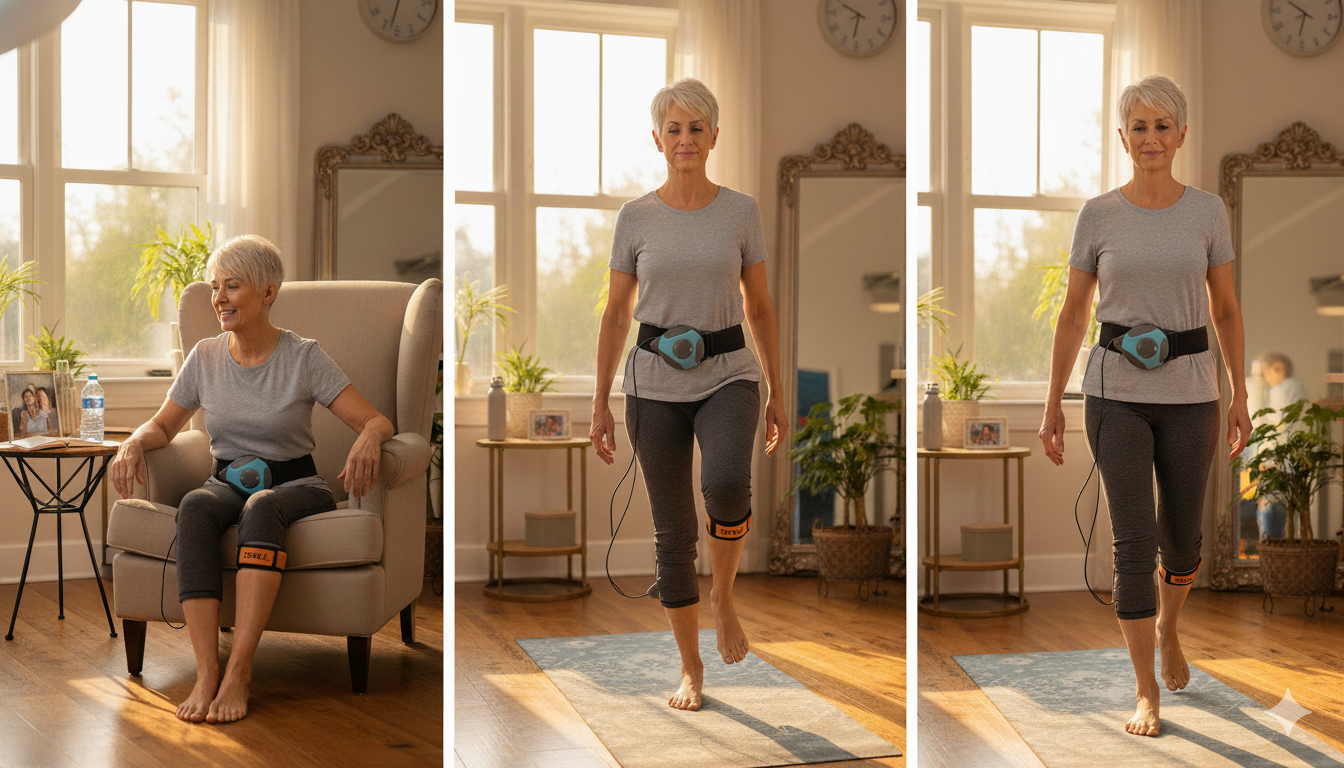Best Exercises for Rheumatoid Arthritis
Why Exercise Matters for Rheumatoid Arthritis Management
Living with rheumatoid arthritis (RA) means navigating persistent joint pain, stiffness, and fatigue that can limit daily activities. For many patients, the question can exercise help rheumatoid arthritis is top of mind. The answer is a definitive yes—when tailored appropriately, exercise reduces inflammation, strengthens supporting muscles, enhances joint function, and boosts overall quality of life. According to the Arthritis Foundation, regular physical activity is a cornerstone of RA care, helping patients maintain independence despite flares.
Israeli medical innovation, like advanced neuromotion therapy devices, elevates these efforts by making rehab accessible and effective at home. This article explores
recommended exercise for rheumatoid arthritis, focusing on strategies that deliver real results.

Understanding Rheumatoid Arthritis and Its Impact on Mobility
Rheumatoid arthritis is a chronic autoimmune disease causing joint inflammation, particularly in the hands, knees, and ankles. It affects over 1.5 million Americans, per the Centers for Disease Control and Prevention (CDC), striking women three times more often than men and typically onset between ages 30-60.
Why it matters: RA doesn't just cause pain—it leads to muscle weakness, reduced balance, and mobility challenges that increase fall risk. Without intervention, joint damage progresses, limiting walking, climbing stairs, and even simple tasks. Early, consistent exercise counters this by promoting
neuroplasticity
and joint lubrication.
Proven Rehabilitation Options: The Best Exercises for Rheumatoid Arthritis
The best exercise for rheumatoid arthritis emphasizes low-impact, functional movements to avoid flare-ups while building endurance. Clinical guidelines from the American College of Rheumatology recommend 150 minutes weekly of moderate activity, split into short sessions.
Key options include:
- Aquatic or Pool Walking: Buoyancy reduces joint stress while strengthening legs.
- Seated Leg Extensions and Ankle Flexes: Target knee and calf muscles without weight-bearing.
- Resistance Band Work: Gentle strengthening for rheumatoid arthritis exercise routines.
- Tai Chi or Yoga: Improves balance and flexibility, ideal for neurological aspects of RA fatigue.
For optimal results, integrate neuromotor retraining—devices that assist gait and resistance training accelerate recovery by consolidating motor patterns in just 30 minutes daily.
Practical Tips for Patients and Caregivers
Start slow: Begin with 5-10 minute rheumatoid arthritis exercise sessions, warming up with heat packs. Track progress in a journal, noting pain levels pre- and post-exercise.
Recommended exercise for rheumatoid arthritis tips:
- Prioritize mornings to combat stiffness.
- Use supportive shoes for walking.
- Pair with anti-inflammatory diets and rest days.
- Caregivers: Encourage seated options during flares.
Consult a physical therapist to personalize—many now incorporate wearable tech for home monitoring.
Elevating RA Rehab with Just Walk™ Neuromotion Therapy
For patients seeking advanced support, Just Walk™ from Chaban Medical (developed with Salute Rehab Ltd) stands out as a pioneering, ultra-portable wearable device. Weighing just 3 lbs, this fully mechanical system assists foot lift during walking and provides adjustable resistance for leg strengthening.
What sets Just Walk apart:
- Dual-Action Design: Neuromotor retraining + resistance gym in one, unlike static bikes or bulky machines.
- Target Users: RA patients with leg weakness, post-flare rehab, or balance issues; suitable for home, clinic, or travel.
- Use Scenarios: 15-20 minute gait sessions twice daily, or seated knee/ankle workouts. Detachable grips extend to upper body for comprehensive care.
Clinical testing shows rapid improvements in walking independence.
Summary
Rheumatoid arthritis exercise isn't just beneficial—it's essential for long-term mobility. From basic walks to innovative tools like Just Walk™, consistent, low-impact activity empowers patients to reclaim their stride. Speak with your rheumatologist today about integrating these
recommended exercise for rheumatoid arthritis into your plan.
Related Topics
FAQs
?Can exercise help rheumatoid arthritis during flares
Yes, opt for gentle, non-weight-bearing moves like seated exercises to maintain mobility without worsening inflammation.
?What is the best exercise for rheumatoid arthritis in the legs
Low-impact walking or resistance training, enhanced by devices like Just Walk™ for gait support.
?How often should I do rheumatoid arthritis exercise
Aim for short daily sessions—20-30 minutes total—focusing on consistency over intensity.
?Is Just Walk™ safe for RA patients
Its adjustable, low-load design suits RA; consult your doctor for personalized guidance.
Source
- Arthritis Foundation: "Exercise and Rheumatoid Arthritis" (arthritis.org)
- American College of Rheumatology: "RA Management Guidelines" (rheumatology.org)
Important
This article is for informational purposes only and is not a substitute for professional medical advice; always consult your doctor or physical therapist before starting any exercise or using any device.



